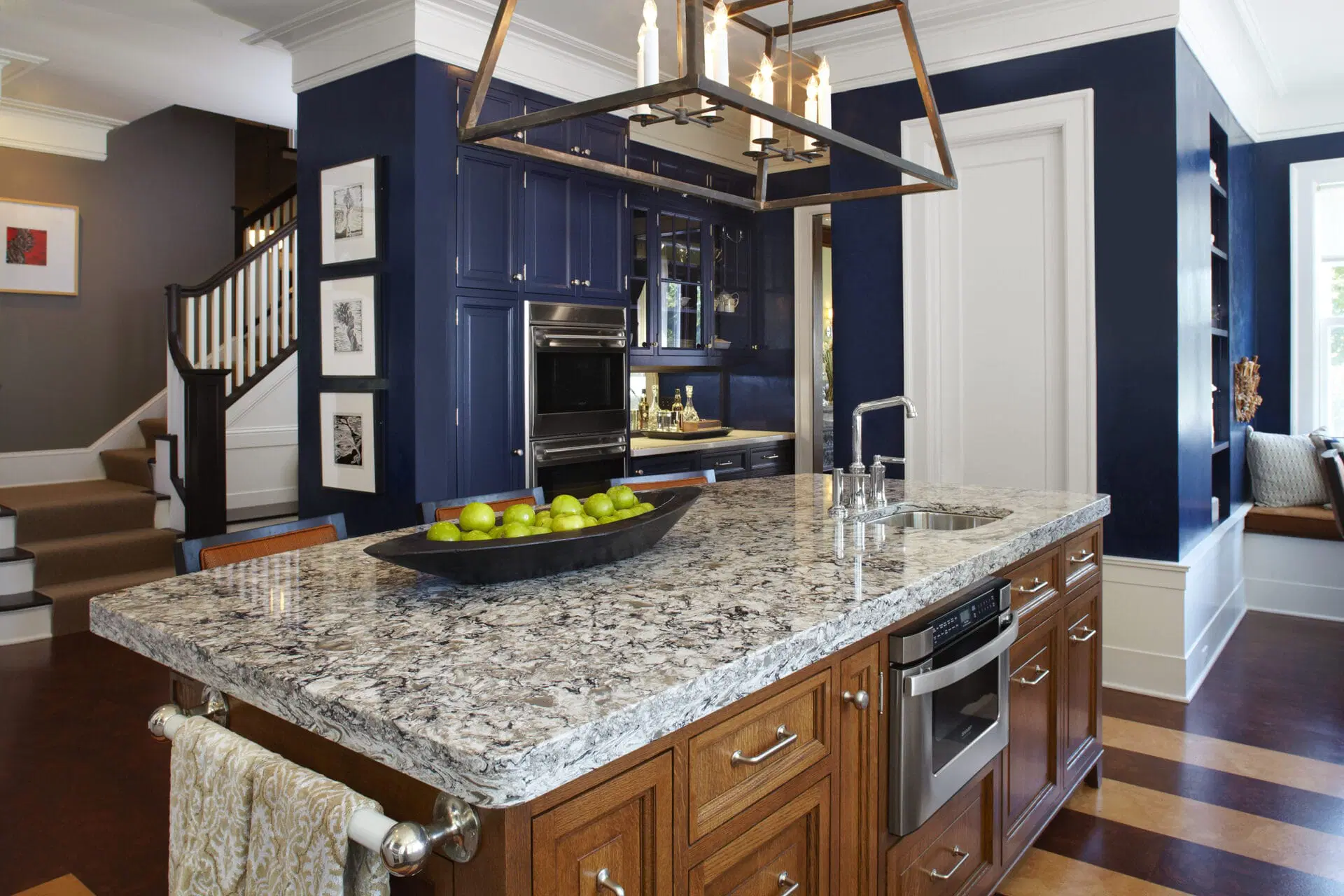You’ve fallen in love with a quartz sample under the bright, fluorescent lights of a showroom, only to have it look completely different when you get it home. This common frustration underscores a critical factor in choosing a Quartz worktop colours : lighting. The type, temperature, and direction of light in your kitchen dramatically alter the perceived colour, undertone, and intensity of your quartz. Understanding this “science of light” is the final, essential step in selecting a colour you will love in your own space, at every hour of the day.
- Understanding Light Temperature: Warm vs. Cool Light Bulbs
Light temperature, measured in Kelvins (K), is the most significant factor affecting colour perception. Warm White light (2700K-3000K) has a yellow-orange glow, similar to incandescent bulbs. It makes warm quartz colours (creams, beiges, brown-based greys) feel richer and cozier, but it can make cool whites and greys appear slightly dingy or yellowed. Cool White or Daylight bulbs (3500K-5000K+) emit a blue-white light that mimics natural daylight. This light makes cool colours (pure whites, blue-based greys) look crisp and clean but can wash out warm colours, making them look flat and stark. You must view your quartz sample under bulbs that match what you have (or plan to install) in your kitchen. - The Power of Natural Light: North vs. South Facing Rooms
The amount and quality of natural light your kitchen receives is a permanent game-changer. A South-facing roomis flooded with warm, yellow light throughout the day. This sunlight will enhance warm undertones in your quartz, making creams feel creamier and warming up cool greys. A North-facing roomreceives much cooler, bluer, indirect light. This light can make already cool colours feel even colder and more stark, while it can help balance the warmth in a beige or cream quartz, preventing it from looking too yellow. Always observe your sample in the actual kitchen at different times—morning, noon, and evening—to see the full range of its appearance. - Artificial Light Placement: Overhead, Under-Cabinet, and Pendant Lights
How light is distributed in your kitchen creates highlights and shadows that change how you see the worktop colour. Bright, overhead downlights can create glare and wash out the surface, making subtle veining disappear. Under-cabinet lighting is crucial; it throws light directly onto the worktop surface, revealing its true colour and pattern where you need it most for tasks. This light can make dark worktops look less imposing and help light worktops appear brilliantly bright. Statement pendant lights over an island add another layer, casting focused pools of light that can make the quartz below appear dramatically different from the sections in shadow, adding dynamic movement to the surface. - The Unavoidable Influence of Fixed Elements: Reflections and Colour Cast
The final colour you see is never just the quartz itself; it’s a product of its environment. This phenomenon is called “colour cast.” A large, dark green slate floor will reflect a greenish tone onto a white worktop. Vibrantly coloured cabinets or a bold painted wall will cast their colour onto adjacent surfaces. Even a large red toaster or a fruit bowl can create a temporary local reflection. Highly polished quartz surfaces are more reflective and susceptible to these effects than a matte or suede finish. When choosing a colour, be mindful of the permanent fixtures and finishes in your kitchen, as they will all contribute to the final, ever-changing colour of your worktop.Conclusion: Choosing Quartz Colours with Confidence
Selecting the perfect quartz worktop colour is about more than simply falling in love with a showroom sample—it’s about understanding how light, space, and surroundings transform its appearance. From the warmth of artificial bulbs to the shifting tones of natural daylight and even the reflections of your kitchen’s finishes, every factor plays a role in how your quartz will look day to day. By testing samples under your actual lighting conditions, considering your kitchen’s orientation, and being mindful of reflections, you can make a confident choice that feels harmonious in every season and every hour of the day. In the end, the beauty of quartz isn’t just in its pattern or polish—it’s in how it interacts with your unique space to create a surface you’ll love living with for years to come.

